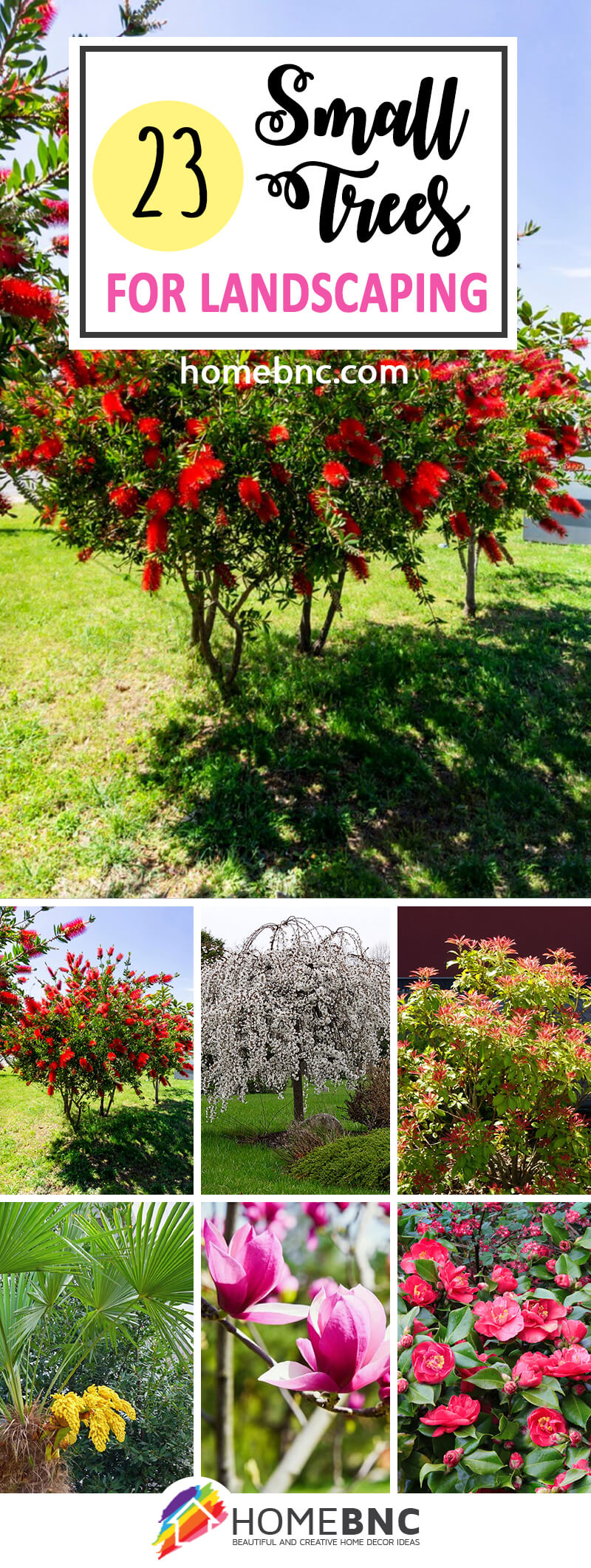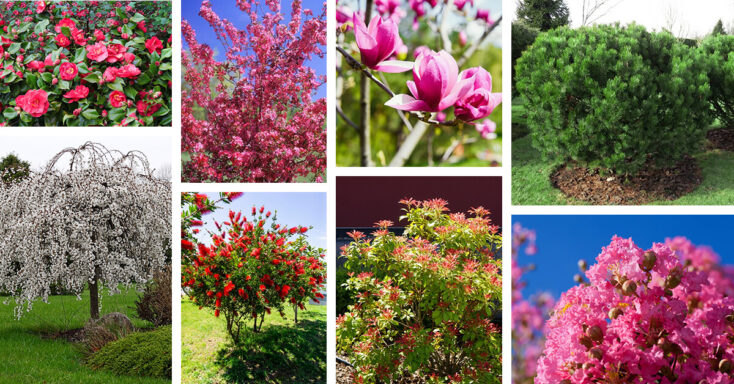Bigger is not always better, especially when it comes to selecting trees for your landscape. As our list of the best small trees for landscaping will come to prove, even the smallest of trees are remarkably capable of having a big impact on the aesthetic appeal of your garden. Small trees can also be a go-to plant option for those who have minimal gardening space. But no matter what your motivation for finding a small tree is, the collection of species below is sure to offer something you’ll love, whether in the form of colorful flowers, ornamental fruit, or an elegant growth habit.
Key Takeaways
Since small trees for landscaping come from many different genera, you can expect the list to come to have a lot of different species varieties, each of which comes with a unique set of traits that makes it valuable as an ornamental landscape plant. With that being the case, you’ll learn a lot of niche knowledge about each species while you read. You’ll also come across a few key takeaways that we’ll point out here before you proceed to our list.
- Small trees are generally below 25 feet tall when mature.
- Many of the most popular small trees are dwarf varieties of larger trees.
- Small trees can be the ideal option for small growing areas.
- The flowers of small trees can be their most impressive feature.
- Some small trees can grow in a shrub-like form as well.
23 Ornamental Small Trees for Landscaping that Enhance any Property
1. Bottlebrush Tree (Callistemon citrinus)
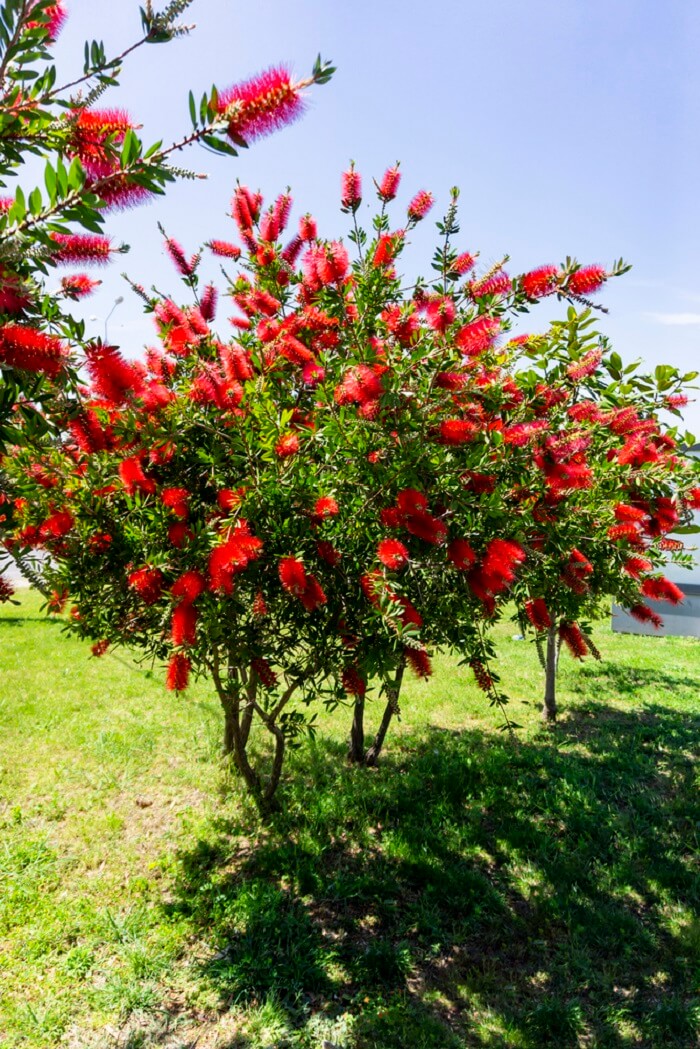
Our list of small trees for landscaping begins with a flowering species that has some of the most unique blooms of any plant we’ll mention here. What makes the flowers of the bottlebrush tree so unique is that both their color and their texture are equally eye-catching. In many cases, this native plant blooms with deep red hues. The flowers themselves consist of many feathery structures that form a loose cylindrical shape and allow the plant to have a feathery texture during the bloom time. At times, this plant grows as a large or even a medium to small-sized shrub. But at its largest, it can be a 25-foot-tall tree.
2. Camellia (Camellia japonica)
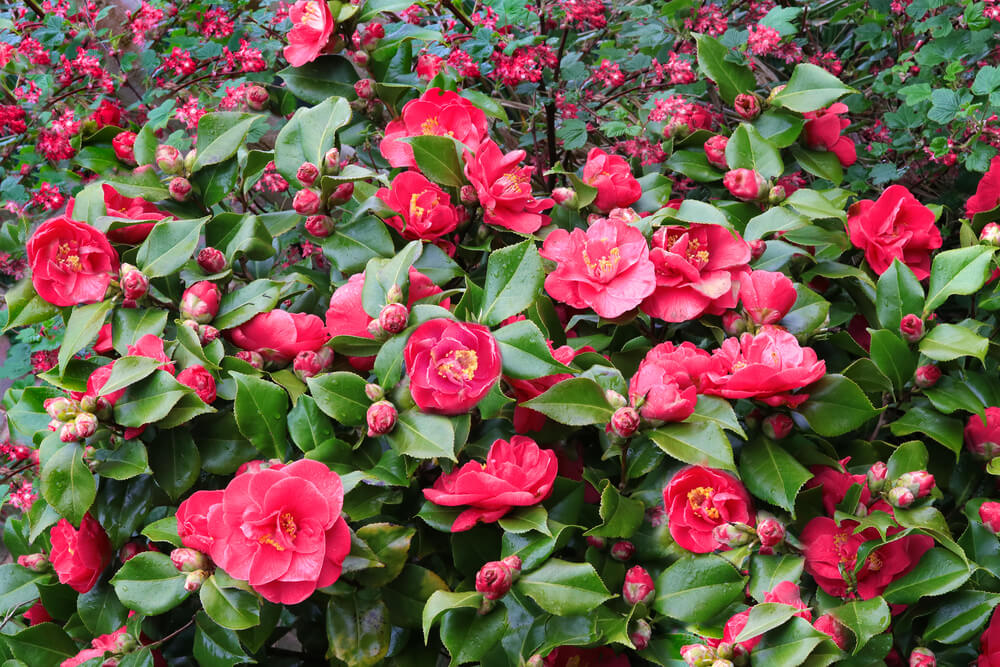
The first thing that you are sure to love about the camellia is the amazing flowers this plant produces. Those flowers are somewhat rose-like, with many petals encircling a single center point, and are so perfect that the flowers appear almost geometric in their form. After that, you’ll enjoy the lovely broad evergreen leaves that the flowers set themselves against. In addition to that unmatched beauty of flowers and foliage, the camellia is also a perfect plant option that is well within the category of small trees. At its tallest, this plant grows to be around 10 to 12 feet tall, with a graceful multi-stemmed form that only adds to the elegance of this plant.
3. Carolina Silverbell (Halesia carolina)
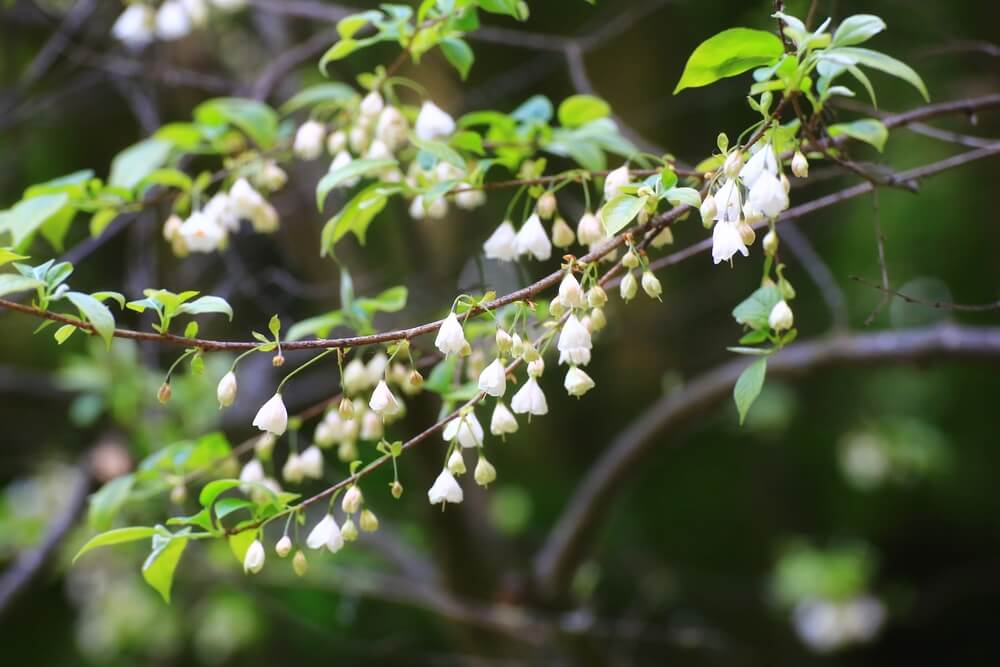
The Carolina silverbell tree is another small native tree that is as beneficial to those looking to boost the ornamental appeal of their landscape as it is to the surrounding environment. Amazingly, this tree delivers on both those fronts thanks to a single feature, its flowers. The blooms of a Carolina silverbell are small, dangling, and stark white. They provide a lovely tone to just about any garden, and they are capable of attracting local pollinator species as well. This dual benefit makes the Carolina silverbell a small tree well worth considering for your next landscaping project.
4. Chaste Tree (Vitex agnus-castus)
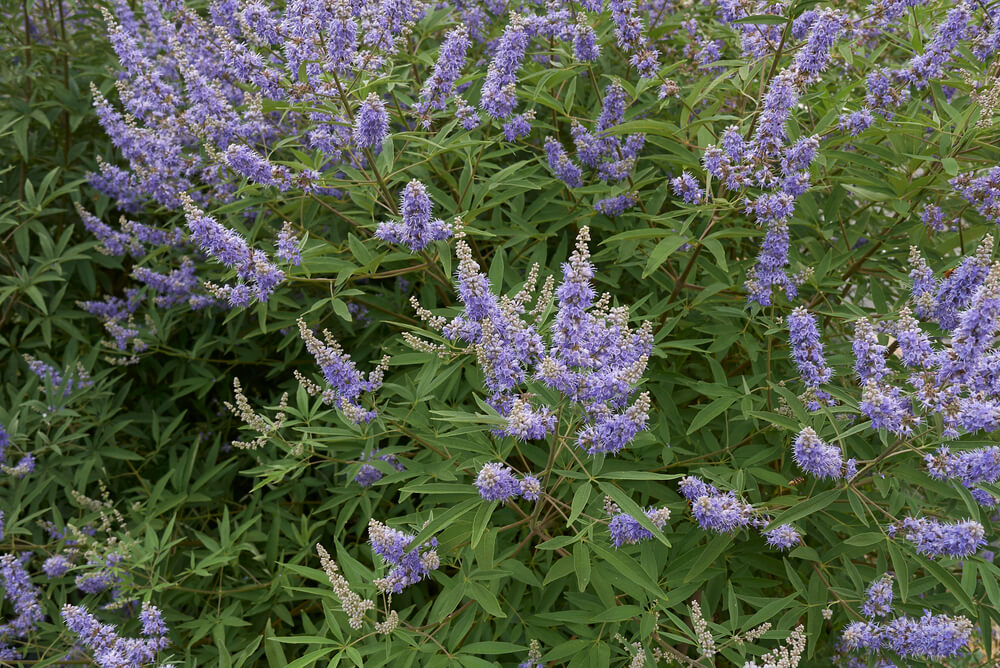
The chaste tree is one of the smallest on this list of small trees for landscaping, but its beauty makes it worthy of earning a mention here. This plant blooms with long purple flower spikes similar to what you would see on a lavender plant. Along with being an attractive plant, the chaste tree is also a durable plant. While it requires full sunlight, at least six hours of direct exposure or more per day, it is also adaptable to poor soils and soils that are highly alkaline, where many other plants fail to establish themselves.
5. Crabapple (Malus)

No matter what variety you own, your crabapple tree is sure to be one of the most attractive plants, of any size, in your garden. During the early spring, these trees cover their entire canopies with brilliant flowers, typically before the leaves arrive. You should know that some crabapple trees are larger than others and that if you want a tree that remains small, you should choose a variety that does so. Still, nearly all crabapple trees will grow to be about 25 feet tall or less, which technically classifies them as small trees.
6. Crimson Queen Japanese Maple (Acer palmatum ‘Crimson Queen’)
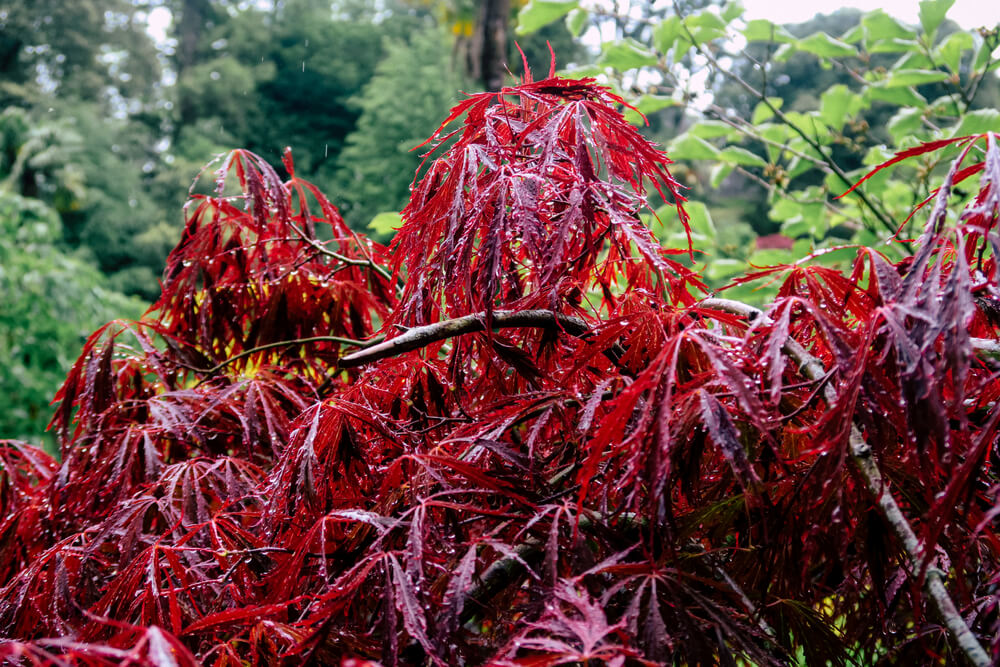
The full-size version of the Japanese maple tree is a sight to behold, but this version may be even more impressive. The cultivar known as the crimson queen Japanese maple is a dwarf variety of the Acer palmatum species. The cultivation of this plant has led to some unique features. One of those features is a dwarf size of just a few feet tall and wide at maturity. The crimson queen Japanese maple also has a distinct weeping habit that is not present in a typical Japanese maple, as well as complex leaves that have a lace-like appearance.
7. Dwarf Hinoki Cypress (Chamaecyparis obtuse ‘Nana Gracilis’)

For those who are looking for a tree that is small and evergreen but still highly ornamental, the dwarf Hinoki cypress may be the perfect option. This plant grows with a pointed cylindrical form, which means that it will not grow exceptionally wide, making it great for narrow spaces. The dense foliage of this plant is surprisingly attractive as well since it is a bright, vibrant green. At times, it can even have golden hints. At most, this plant will reach 25 feet tall, but that takes a very long time and does not typically occur. Instead, your dwarf Hinoki cypress is likely to be between five and eight feet tall at most.
8. Dwarf Mugo Pine (Pinus mugo)
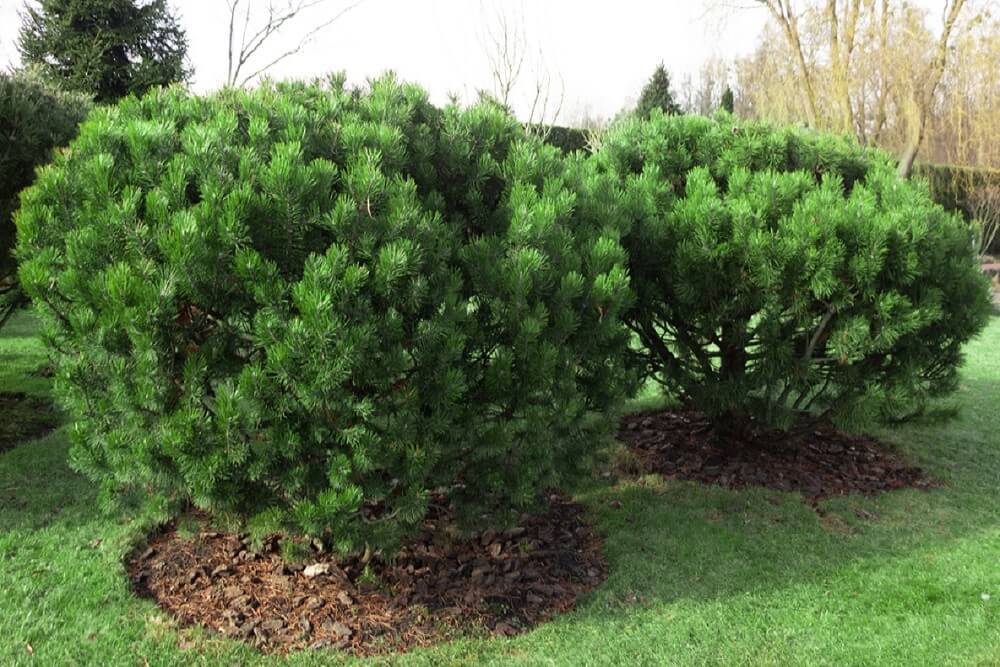
Just like the last plant we mentioned, this dwarf species is a perfect evergreen option to add to compact growing spaces. The dwarf Mugo pine has an irregular habit that is almost wild in appearance at times. However, that wildness only adds to the appeal of this plant. The dwarf Mugo pine also produces new growth in the form of candles, which themselves are ornamentally valuable as they stand vertically, providing a lovely color contrast to the dark green needles. While this plant does remain small overall, you should know that it tends to spread horizontally more so than vertically, which you should account for when spacing this plant.
9. Eastern Redbud (Cercis canadensis)
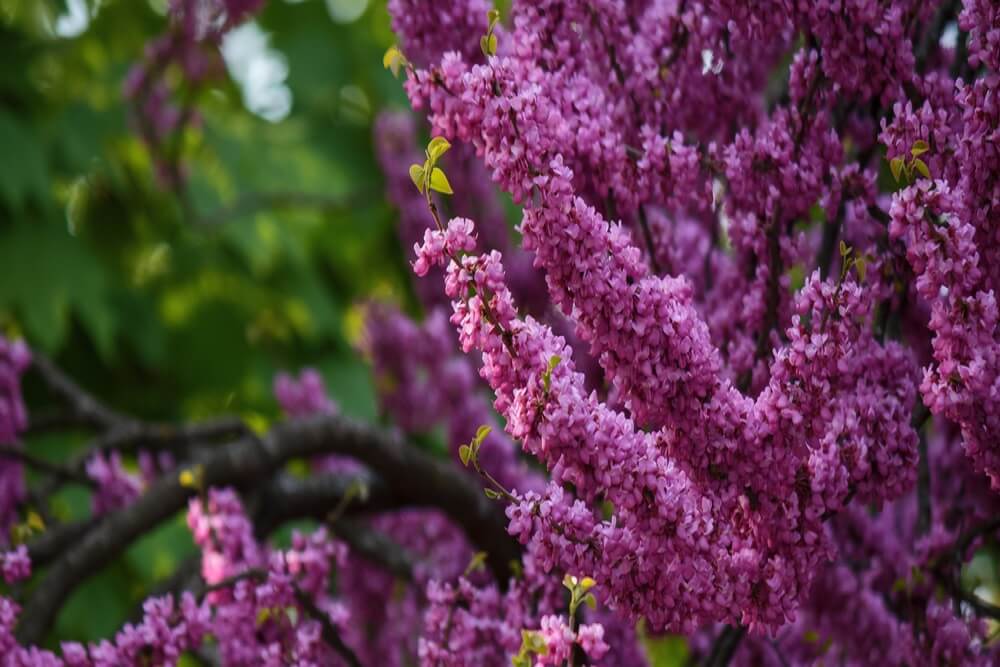
The eastern redbud is the perfect small tree for those who want to add early spring flowers to their garden. During the first few months of the spring season, while many plants remain dormant or are only just beginning to develop their leaves and flowers, the eastern redbud will be in full bloom with vibrant purple flowers that coat each major branch. After the flowers arrive, the leaves will arrive as well, which are interesting in their own right due to their large heart shape.
10. English Hawthorn (Crataegus monogyna)
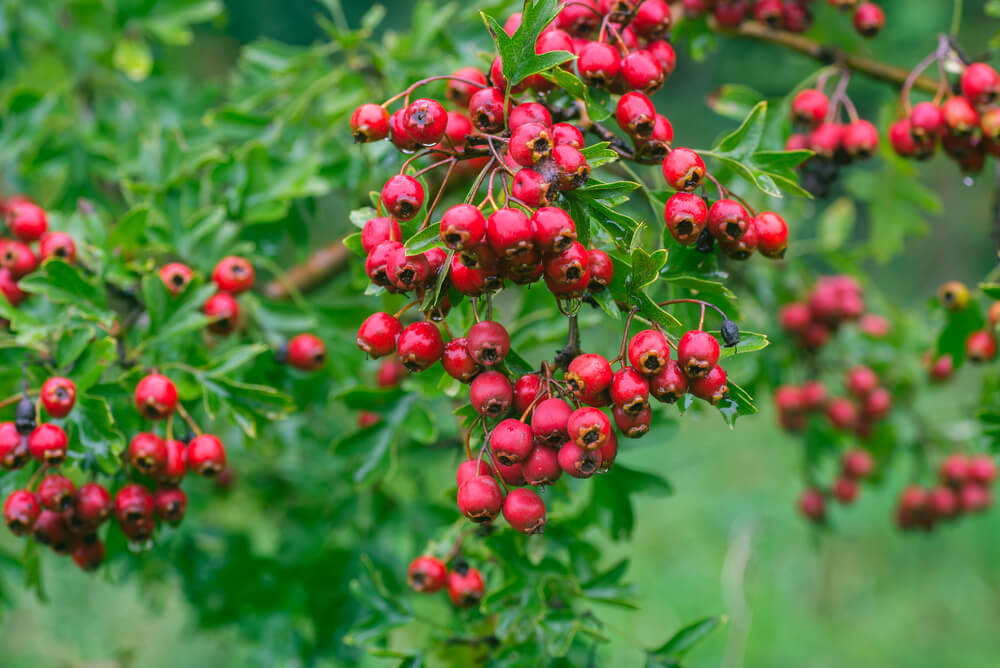
The English hawthorn is a small tree, growing to about 20 feet tall, with an irregular canopy that provides different colors depending on the current season. During the spring, the English hawthorn has beautiful white blooms. After those flowers fade, the fruits begin to develop, which are just as ornamentally valuable as the flowers since they have a noticeable reddish-pink color. During all parts of the active growing season, the English hawthorn also has rich green deciduous leaves that serve as the perfect backdrop to the flowers and fruits.
11. European Fan Palm (Chamaerops humils)
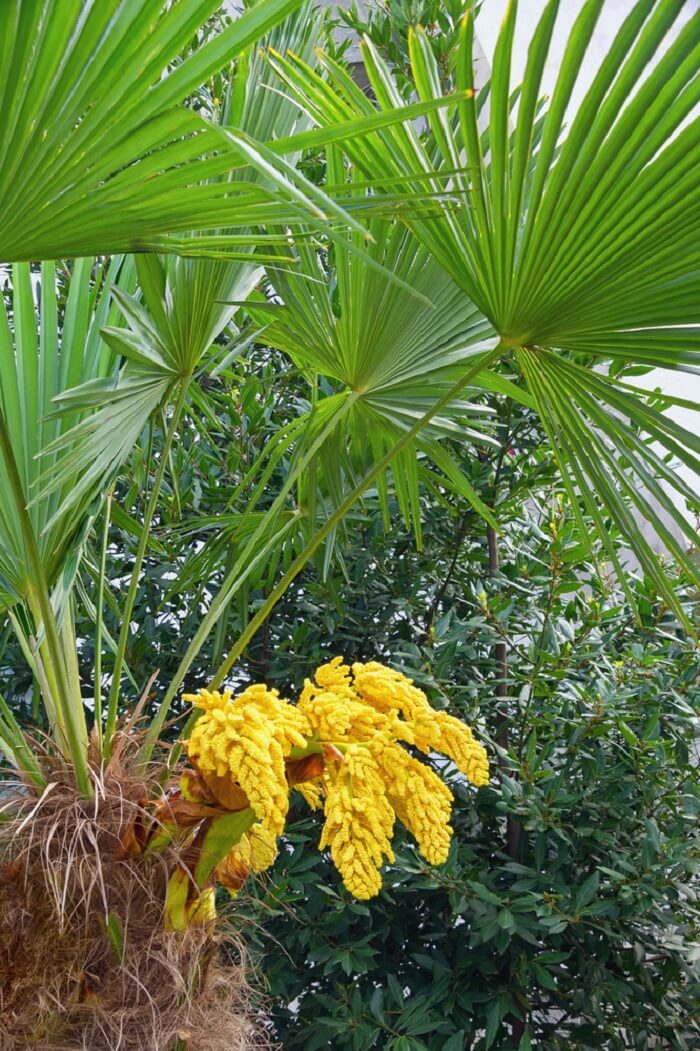
You may not have expected to see a palm tree variety on our list of small trees for landscaping. After all, many of the most popular palm trees grow to be incredibly tall. However, the European fan palm tree reaches only 10 feet tall and has tropical fan-shaped fronds that palm tree enthusiasts know and love. Additionally, this palm tree is also surprisingly cold-hardy. It can survive as far north as hardiness zone 8, which means it can live outdoors all year throughout a larger region of the United States than most palm tree varieties would.
12. Flowering Dogwood (Cornus florida)
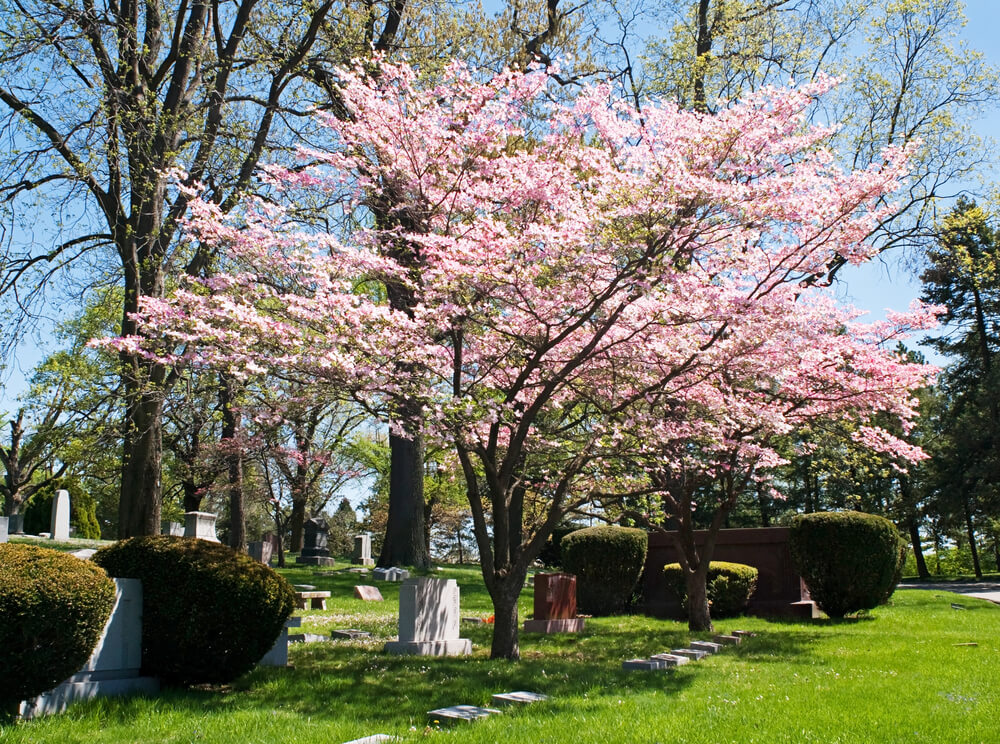
Few, if any, plant experts would complete a list of small trees for landscaping without mentioning the flowering dogwood. This classic landscape feature has some of the most beautiful spring flowers you can find. The flowering dogwood also has a lovely growth habit that includes graceful spreading branches that reach about 25 feet tall and wide at maturity. Whenever you need a small tree that can serve as the perfect focal point in your garden, you can trust the flowering dogwood to be an excellent option.
13. Fringe Tree (Chionanthus virginicus)
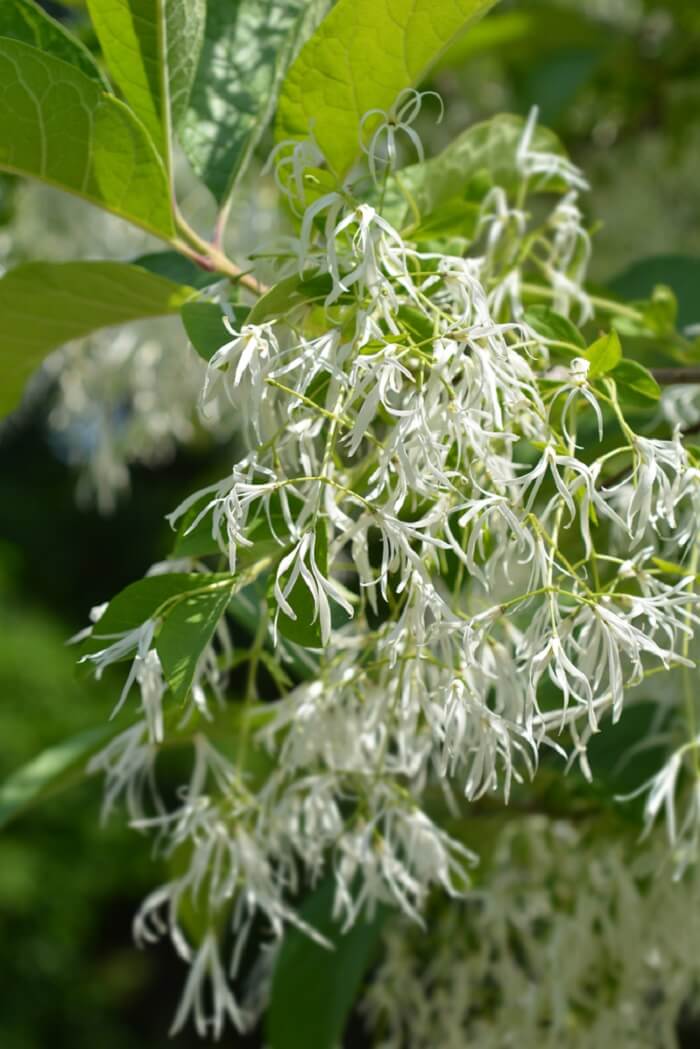
When you want to create a landscape design that is environmentally friendly, one of the best approaches you can take is to plant native species. Native species are not only the best plant options for supporting local pollinators and wildlife, but they can also be just as beautiful as non-native and cultivated ornamental plant options. Such is the case for the fringe tree, which hails from the eastern part of the United States and has a beautiful set of flowers. Those blooms have a pure white color and an interesting form that is very frilly rather than having a classic flower shape.
14. Hopi Crape Myrtle (Lagerstroemia indica ‘Hopi)
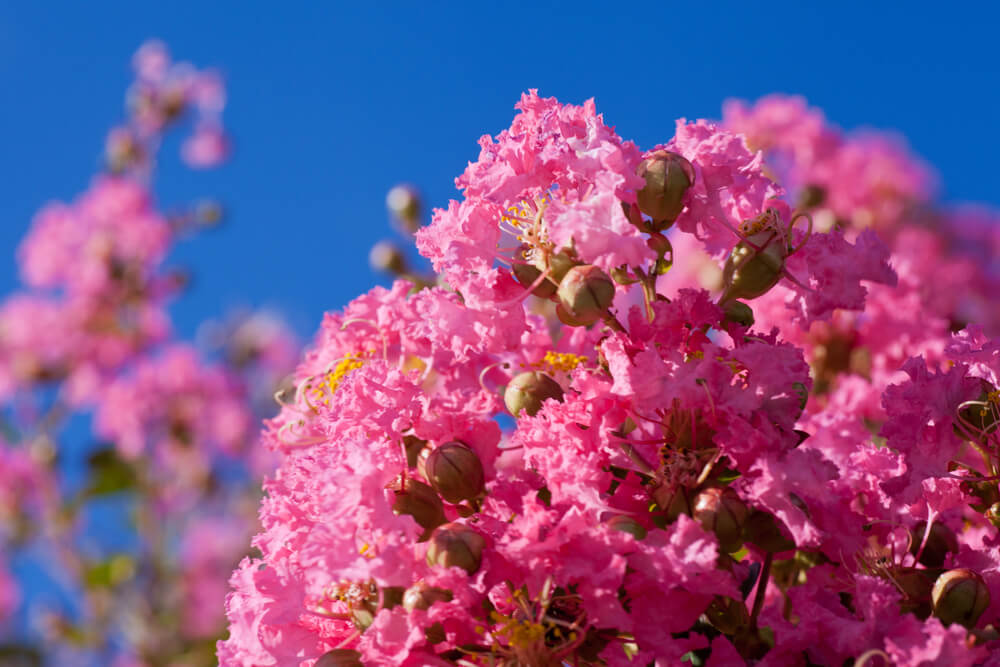
Most crape myrtle varieties are on the smaller side. However, if you want to guarantee that your version remains in a compact form, then you should opt for the Hopi crape myrtle. The Hopi crape myrtle is a cultivated crape myrtle option that reaches a maximum height of about five to 10 feet tall. Like other crape myrtles, the Hopi crape myrtle has all of the amazing ornamental qualities that we have come to expect from this plant group. Most notably, the Hopi crape myrtle has large clusters of pink flowers that last for a long portion of the year.
15. Jane Magnolia (Magnolia liliflora ‘Jane’)

While some magnolia trees can grow to be surprisingly large, the Jane magnolia variety is not one of them. In fact, this hybrid small tree can grow in a shrub form in some cases. But whether you grow your Jane magnolia as a tree or a shrub, you are sure to love the flowers it provides in spring. Those flowers arrive before the leaves and can be somewhat vulnerable to late winter and early spring storms. As such, it is always best to plant a magnolia tree in an area that has a decent amount of wind protection, which can help keep the valuable flowers intact.
16. Japanese Pieris (Pieris japonica)
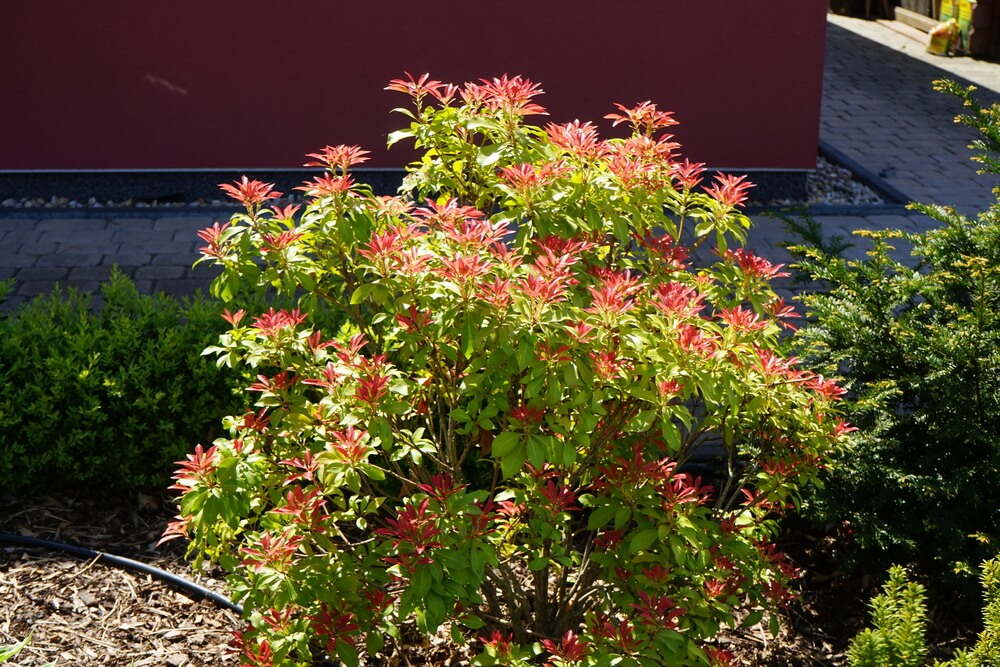
The Japanese pieris, which sometimes goes by the name Japanese Andromeda, is another plant that can grow as a small tree or as a large shrub, depending on its stage of development. Regardless of this plant’s age, it will provide a rounded canopy full of glossy evergreen leaves that have a pointed oval shape. During the bloom time, the Japanese pieris will produce clusters of bell-shaped flowers that dangle from the stems. Some versions of this plant also have new growth that has a fiery red and orange shade that eventually fades to green as the season progresses.
17. Limelight Hydrangea Tree (Hydrangea paniculata ‘Limelight’)
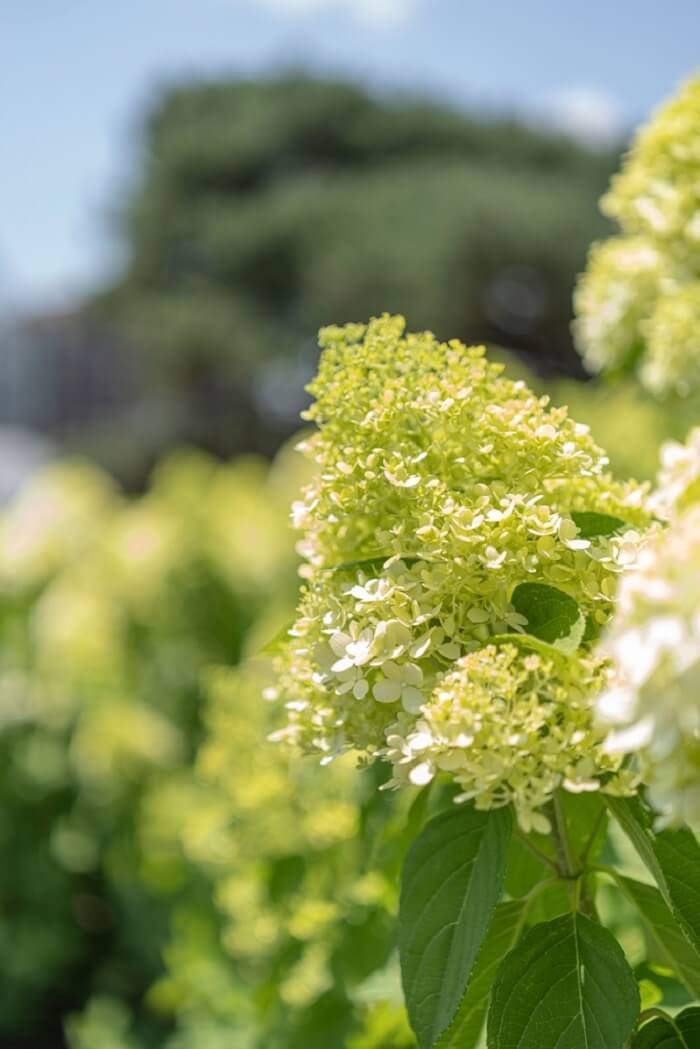
It is true that most hydrangea varieties are medium-sized to large shrubs. However, this variety, known as the limelight hydrangea tree, is a dwarf species that takes a miniature tree form consisting of a single slender trunk and a small canopy of flowers and foliage. The blooms of this plant are a bit different than other hydrangea blooms and are the inspiration for this plant’s common name. Each flower panicle is mainly white with a light green tint. That flower color, along with the unique growth habit, is what makes this plant so different and interesting among our list of small trees for landscaping.
18. Paperbark Maple (Acer griseum)
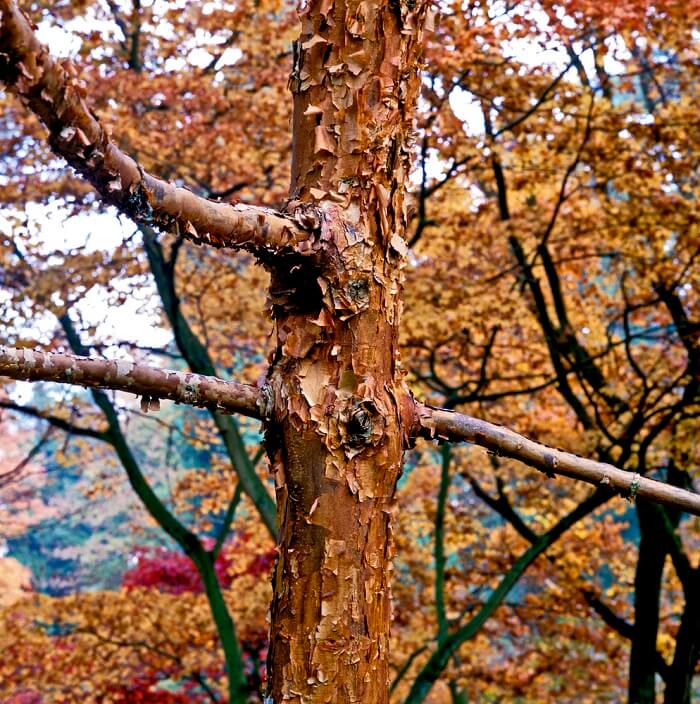
There are many maple tree varieties that people enjoy planting, but for whatever reason, the paperbark maple tree does not get as much recognition as other maple options. Still, the paperbark maple is well worth planting, especially if you want a small tree that has amazing bark features. The main trunks and branches of the paperbark maple have a rich bronze shade that shines in the sunlight. The outer layers of that bark peel dramatically as the plant expands, which adds immensely to this plant’s visual appeal. The paperbark maple also has leaves that are different from those of most maples, which may be part of the reason that people overlook this species as a viable maple option.
19. Paper Birch (Betula papyrifera)
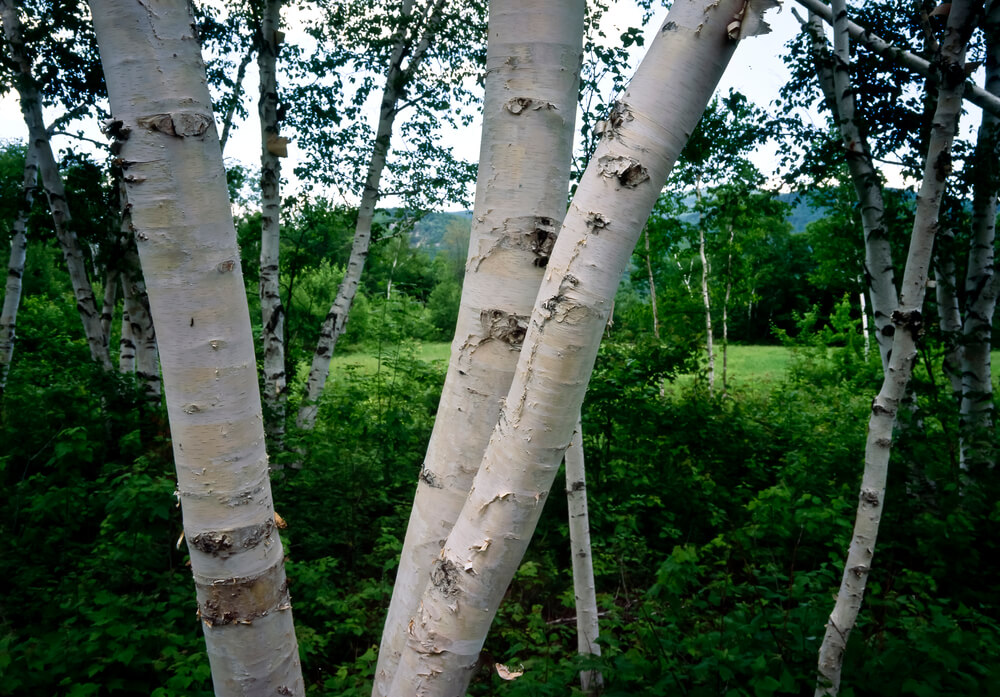
The paper birch tree is a classic element of both the residential landscape and forested landscape throughout the United States. Admittedly, it is possible for this tree to grow tall enough to enter the range of medium-sized trees. However, in most scenarios, a paper birch will remain a small tree for most, if not all, of its life. During that lifespan, the paper birch will give your garden interest during every season. That interest is in part due to the ever-present white bark and, in part, due to the glorious yellow shade the leaves adopt in fall.
20. Royal Purple Smoke Tree (Cotinus coggygria ‘Royal Purple)
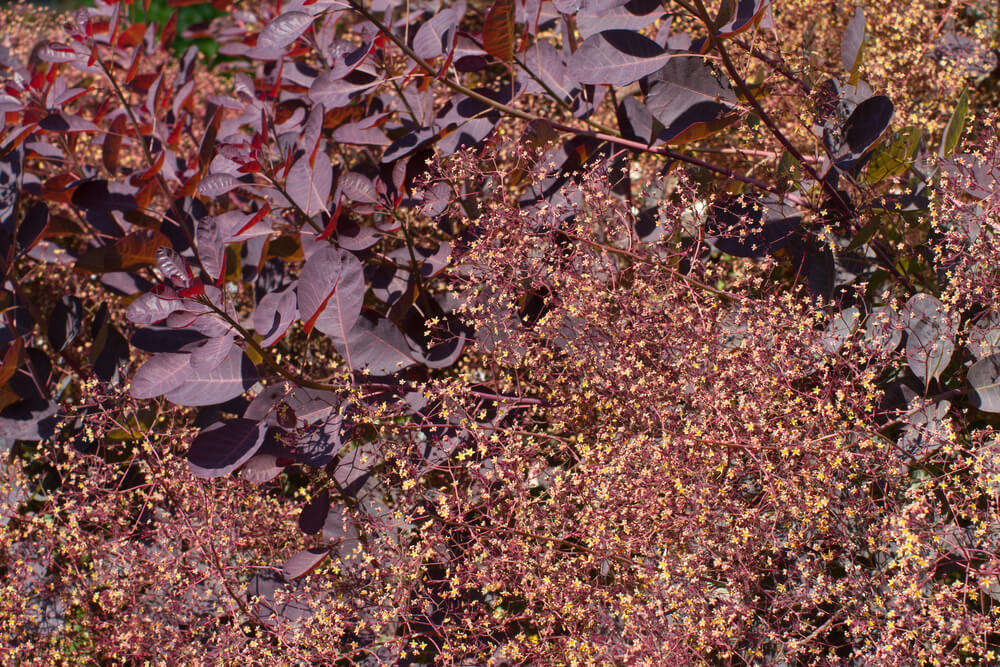
Are you a gardener who loves purple? If so, then the royal purple smoke tree is the ideal small tree for your next landscaping project. As the name strongly hints, the royal purple smoke tree offers a regal display of varying purple shades. For example, the leaves of this plant are round and dark purple. This tree also produces light purple seed clusters that have a smokey appearance and give the plant incredible texture. Overall, the royal purple smoke tree also remains quite manageable as it has a simple care routine and a moderate size of only 15 feet tall.
21. Sargent Cherry (Prunus sargentii)
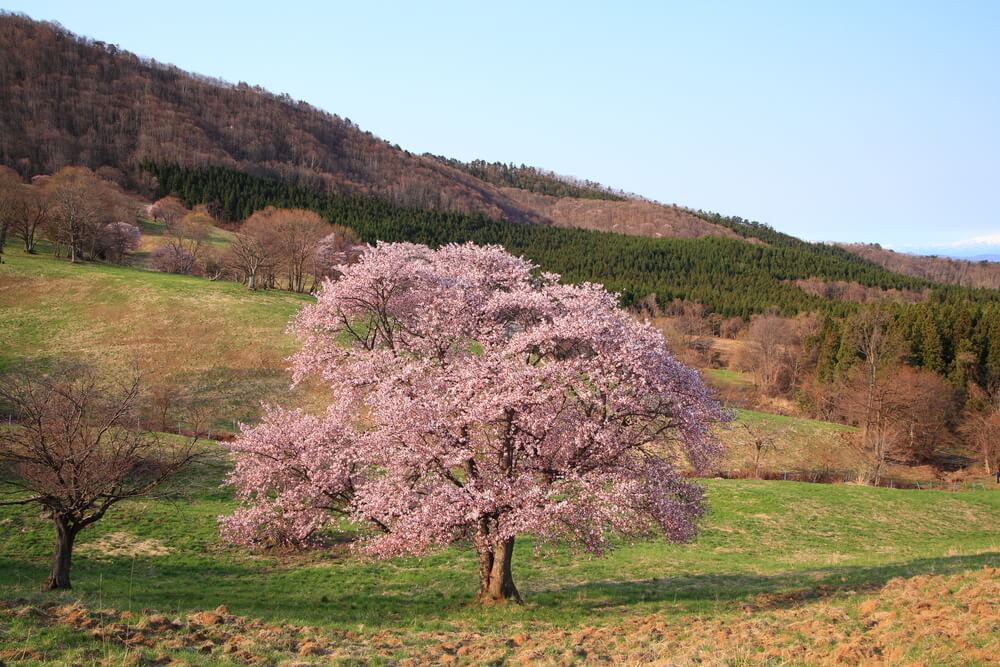
Whether you like small trees for landscaping or not, the Sargent cherry tree is a flowering plant variety that can add an amazing pop of color to any garden. During the spring, you can expect the canopy of this tree to be entirely pink as its famous cherry blossoms open, releasing their fragrance and inviting pollinator species from near and far. That canopy sits atop a single sturdy trunk that is a shiny gray color with noticeable horizontal lenticels. Along with being on the smaller side, the Sargent cherry tree also has a relatively compact rounded form, which makes it all the more suitable for smaller growing areas.
22. Serviceberry (Amelanchier canadensis)
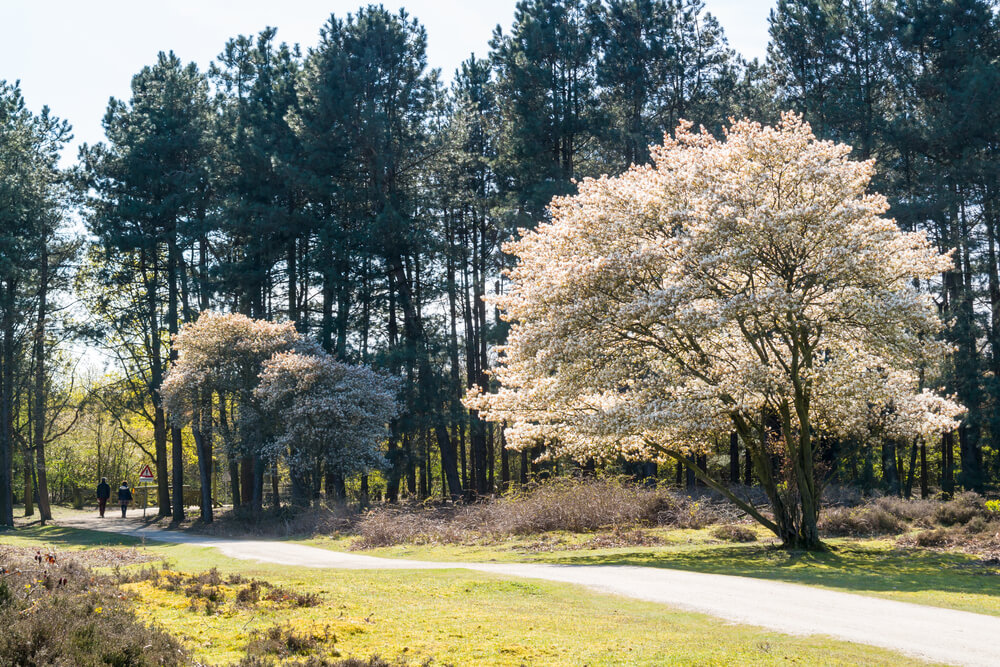
The serviceberry tree is another small tree species that gives us flowers in the early spring, while few other plants are able to do so. In this case, the serviceberry flowers are small, white, and loosely star-shaped. Those flowers eventually give way to the serviceberry fruits, which are edible and quite attractive to look at as well. You will also notice that the serviceberry plant has a lovely growth habit that consists of multiple graceful stems that curve upward as they grow.
23. Weeping Higan Cherry Tree (Prunus pendulata ‘Pendula Rosea’)
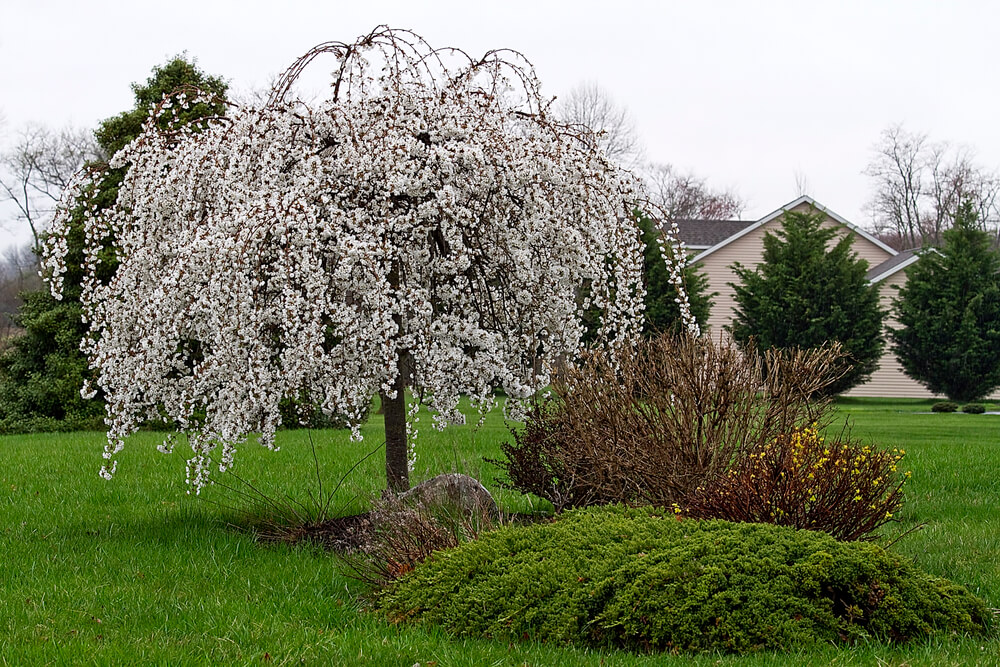
The final plant on our list of the best small trees for landscaping is a cultivated species that is as noteworthy for its flowers as it is for its interesting growth habit. As was true of the Sargent cherry tree, the weeping higan cherry tree has copious amounts of pink flowers in the spring. This plant also has incredible arching branches that give it a weeping canopy that sits on a single main trunk. It is important to prune that canopy, as the pendulous branches can become very dense. However, this plant is otherwise relatively easy to care for.
Frequently Asked Questions About Small Trees for Landscaping
What Size is a Small Tree?
People often use the phrase small tree as a general term. However, it turns out that there is a more technical definition for this plant group. Generally, small trees are those that grow to be about 25 feet tall at maturity or less. Of course, this does not mean that all plants below that height are small trees, as a true small tree must also take on a tree-like growth habit. However, the 25-foot maximum height is a good guideline to help you know what to expect from what people refer to as a small tree.
Which Tree is Best for the Front Yard?
The best tree for any growing location is one that can adapt well to the growing conditions present in that location. With that said many people choose to grow ornamental trees and shrubs in their front yards to add curb appeal and fill out foundation beds. Shade trees can also have their place in the front yard landscape if space allows, as they can cast shadows on your home, which may lead to lower cooling costs in the summer months.
What is the Best Tree to Plant Near a House?
When planting a tree near a house, it is imperative to select a species that does not grow too large for your intended growing area. If a plant growing near a house gets too large, it can damage both the above-ground and below-ground components of the house, often leading to structural damage. The better approach is to select a species that remains small throughout its life. Species with narrower, more upright growth habits can also be better spatial options for areas near houses and other structures.
What is the Smallest Growing Tree?
It is impossible to say which tree is the smallest growing in the world. However, there are plenty of tiny dwarf plant varieties that grow to a minuscule scale. For example, bonsai tree species are incredibly small, partially due to their natural growth and partially due to maintenance intended to keep them small. Additionally, there are many dwarf tree varieties that can grow outdoors and remain very small, often reaching just a few feet tall or less.
What is a Shrub or Small Tree?
If you see that a plant has the designation as a shrub or small tree, then that means that the plant is on the cusp between these two plant groups. In many cases, plants with this designation begin their lives in a shrub-like form and eventually develop into small trees. In other cases, the shape that the shrub/small tree takes depends on how you choose to prune it. At times, it can be difficult to determine if a plant is truly a large shrub or a small tree, which is another reason why this term exists and is useful when describing plants.
What Trees Are Safe Next to the House?
The safest trees to grow next to a house are ones that will not grow too large and begin to interfere with the structural integrity of the house. Also, some plants have roots that are significantly more vigorous than others. Such plants are not as well suited to growing next to a house as their roots can damage a foundation. Even if you choose a plant that is generally safe to plant next to a house, you still need to be aware of spacing. Giving your tree the space it needs to grow and expand is vital to ensuring it does not cause issues with your house.
The topic of small trees for landscaping can generate a surprisingly large number of questions and curiosity. In response to that curiosity, we have decided to answer a few of the most commonly asked questions about this topic in the sections below. The responses to these questions will cover some of the basics related to small trees and provide some practical insights for anyone interested in adding one of these amazing plants to their landscape.
23 Graceful Small Trees for Landscaping that Are Easy to Manage
By now, there is no doubt that small trees can offer as much visual appeal as any other plant, regardless of size. Small trees that you can use for landscaping come with beautiful flowers, foliage, fruits, and much more. In fact, the pure variety of small trees is what allows this plant group to be such a crowd-pleaser. The fact that they can fit in relatively limited growing spaces only makes small trees all the more convenient for a wide range of gardeners. As such, the chances are that you’ll need a small tree for your landscape at some point in the future. When that time comes, use our list as your initial guide to some of the best species options.
